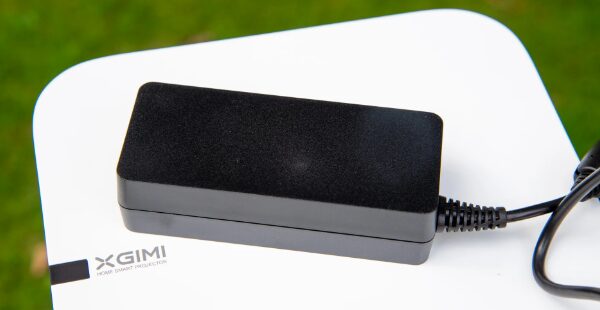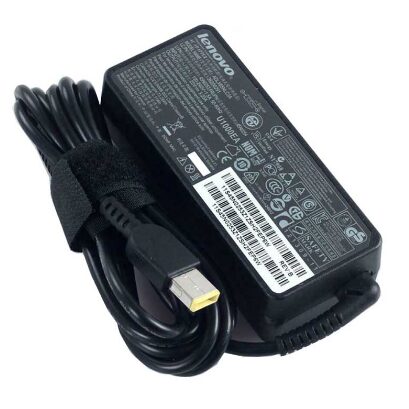Can we use 65w charger for 90w laptop? Laptops are getting smaller and thinner every year. That means that the power supply inside has to get smaller as well. This is why we see various laptops with different power supplies. For example, there are 65w, 75w, and 90w power supplies. These power supplies are made up of different parts, such as the transformer, the rectifier, the filter capacitor, and the regulator.
So what does all this mean? It means that you can charge your laptop using a power supply larger than the power required by your laptop. This article will explain how to use a 65w charger for a 90w laptop and vice versa.
How to use a 65w charger for a 90w laptop?
Using a lower-wattage charger for a laptop that requires a higher-wattage charger is generally not recommended. While a 65W charger may be able to charge your 90W laptop to some extent, it may not provide enough power to charge the battery fully or charge the battery very slowly. Additionally, using a lower-wattage charger may put extra strain on the charger itself. It will have to work harder to provide the necessary power, which could lead to overheating or other issues.
It is always best to use the charger specifically designed for your laptop, which in this case would be a 90W charger. This will ensure that your laptop receives the appropriate amount of power and will help prolong the life of the charger and the laptop. If you do not have a 90W charger and need to purchase one, it is important to ensure that you get one compatible with your laptop’s make and model.
Here are some ways you can do it!
The first step in using a 65w charger is to determine whether it is safe to use the charger with your laptop. It is always a good idea to check with the manufacturer before using a power supply different from the one that came with your laptop.
If you are unsure whether or not you can safely use a power supply that is different from the one that came with your laptop, here are some guidelines:
1) Make sure the adapter is listed in the user’s manual and that it has an “official” or “original” logo.
2) Look for a warning label stating that the adapter is unsuitable for all laptop models.
3) If there is a warning label, look for the model number of the laptop the power supply is designed for and compare that to the model number of the laptop you are currently using.
4) If the two numbers do not match up, make sure the power supply is compatible with your model and operating system (OS) before you use it.
5) Check the manufacturer’s website for more information on the compatibility of your power supply and laptop.
6) Read the following statement: “Any unauthorized repair or modification of this product by anyone other than the authorized service center or manufacturer may void the warranty and shorten the warranty service life of the product.”
7) Read the following statement: “The charger must be plugged into an outlet with the correct voltage and amperage (current). A low current or voltage will damage the charged device and could cause a fire hazard.”
8) Read the following statement: “The charger should never be removed from the computer while the computer is on or charging.
9) Read the following statement: “This charger must be used with a computer, computer monitor, and mobile phone that the authorized service center or manufacturer has serviced.”
The 90w charger in my laptop was broken, so I want to replace it with a 65w charger instead. I searched the internet and found some advice on using the wrong charger for my laptop.
Replace the original charger.
Many people told me to do this to replace the original charger. However, there is also a chance that the replacement charger may not provide enough power. This may result in your computer running slower and may even cause your laptop to shut down.
Use a 65w charger in place of a 90w charger

Many other people suggest using a 65w charger instead of a 90w charger. But this is risky because the laptop is not safe to use. The laptop will be damaged if the 65w charger provides a lower current than the 90w charger.
Therefore, if you follow the first approach and replace the original charger, you might be better off buying a new one.
Conclusion!
In conclusion, it can be dangerous to take the cheap route, especially when it comes to electronics. You can spend hours researching which laptop charger is compatible with your laptop, but it is important to remember that your laptop may only be compatible with certain chargers, not all of them.
Even if your laptop has a 65w power adapter, it does not mean a 90w one will be compatible. If you buy a 65w charger and then try plugging it into a 90w charger, you may damage the laptop or, worse, the charger itself. So, it is recommended that you purchase a 90w charger for your laptop so that you don’t risk damaging the laptop and charger.
FAQs.
Can you use a 65W charger on a 90W laptop?
65W is one thing, but 90W is another. You cannot use a 65W charger on a 90W laptop because it will not work. It would be best if you found a different charger. The same rule applies to mobile devices, laptops, tablets, and phones. If they have a rating system, you need to follow it. You can be very safe if you follow the ratings.
What happens if you use a 65W charger instead of 90W?
If you’re using a charger with more wattage than the one that you have, it will cause overheating. This is because the current going into the charger will increase, which makes it work harder. A 65W charger will also generate less electricity. As a result, it won’t be able to supply enough power to your battery.
Can I use a 65-watt charger with 90 watts?
Yes. 65 watts is the maximum charge rate for the iPhone 7, and 90 watts is the maximum charge rate for the iPhone 8. There is no reason to worry about using a lower-rated charger. Apple does not recommend charging the iPhone with an AC adapter that provides less than the rated amount of power. In some cases, the battery may not get fully charged.
Can I use a 65W charger instead of 100W?
A 65W charger can only handle 65 watts of power, much less than a 100-watt charger. If you use the 65W charger for your device, you will probably have to charge your device for longer. If you use a 100W charger, you will have to charge your device for a shorter time.
It would be best to consider the charger’s rating to determine how long you need to charge your device. You should also look at the device’s rating to determine how much power it needs to operate. If the device’s rating is lower than the charger’s, you must charge your device more often.
